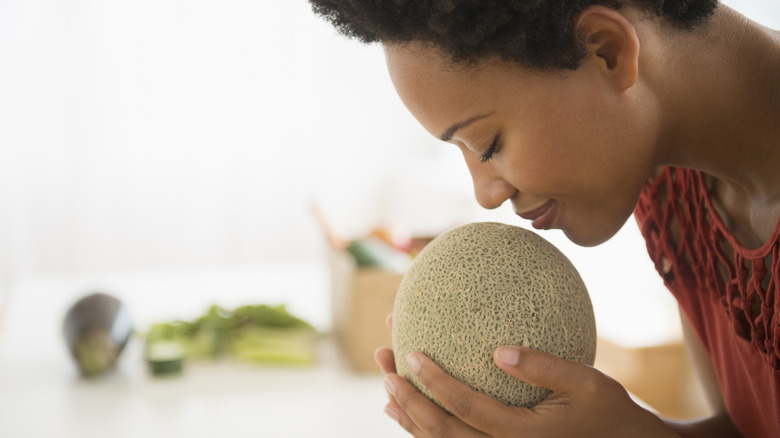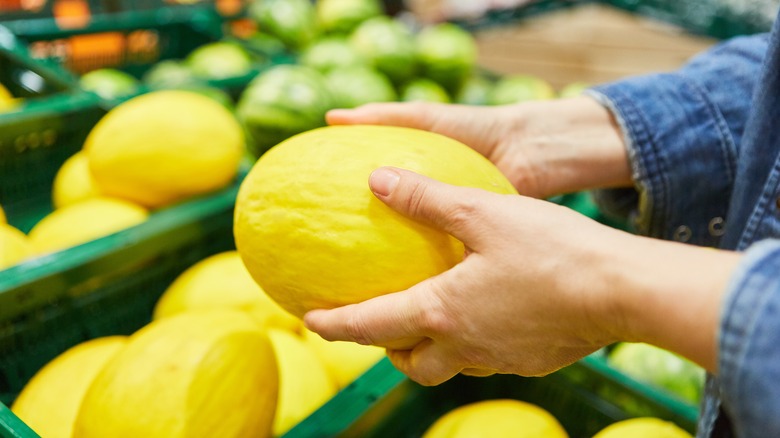Why You Should Give You Melons A Firm Shake Before You Splurge On Them
When it comes to some of our favorite fruits, it's easy to tell at a glance if they're ripe. For example, you can use the color of a peach to tell if you're picking the ripest ones, and there's a simple way to pick the ripest strawberries at a glance. Melons are a little trickier, though. If you've ever headed to the store to pick up a melon and wondered if they're all really as similar as they look, we have a great trick for you. In short, shake that melon. What you hear can help you pick the ripest ones.
That's a big deal, especially when it comes to melons. Many varieties, such as honeydew and watermelon, stop ripening once they have been cut from the vine. This means you're unable to take them home and let them ripen at their own pace, so what you pick up from the store is what you're going to get (fortunately, there are at least some things that you can still do with underripe melons, like pickling them or using them in a smoothie). But when you give it a firm shake and can feel or hear something moving around inside, that's a really good sign.
Why shaking a melon can help you judge ripeness
When you're deciding which melon you're going to take home, there's a few things that you can do — but first, there's an important caveat. Melons are at their best when they're in season during the summer. When they're not in season, they were likely harvested too early so they would hold up better over the long trip to the store and ultimately, your table. That's when you're more likely to end up with a flavorless or even bitter fruit. That's enough to make anyone avoid melons.
Now, let's say you're in the store, faced with a pile of similar-looking melons. Pick one up and give it a good, firm shake. If it's ripe, you'll likely hear and feel the seeds moving inside. When melons ripen, the seed cavity comes loose and allows for this effect.
There are also some sounds that you don't want to detect. If you hear something that makes you think that there's liquid in the center, that means the melon is past its prime. Too much liquid in the center of a melon is something produce inspectors consider a major defect, so you wouldn't want to take that one home.
Other ways to make sure you're getting the best melon
There are a few other signs you're making a good choice when picking a melon. For starters, pay attention to its weight. Perfectly ripe ones will be heavy for their size. You'll also want to check the texture, as ripe melons will have a bit of give, similar to ripe pears.
Color varies by the type of melon, but when it comes to appearance, there's one big red flag you should look for. If the stem is still attached, skip it. When melons are picked at the right time, they'll fall away from the stem rather than have to be cut. The stem end should have a gentle indent, and in the case of watermelons, that yellow side is actually a great indicator that it was left to ripen on the vine.
If you've seen someone tapping on the surface of a melon and wondered if ripe melons really do sound different, they do! If you're shopping for honeydew or watermelon, it should have a hollow sound when you tap it. (Also, check the texture of that honeydew melon at the same time — if it's tacky, that's a sign of ripeness.) Take a whiff of the melon, too. When it's ripe, it'll have a distinctly melon-like and sweet smell. If it smells like something you can't wait to cut into and eat, that's a great sign it's going to be delicious.


